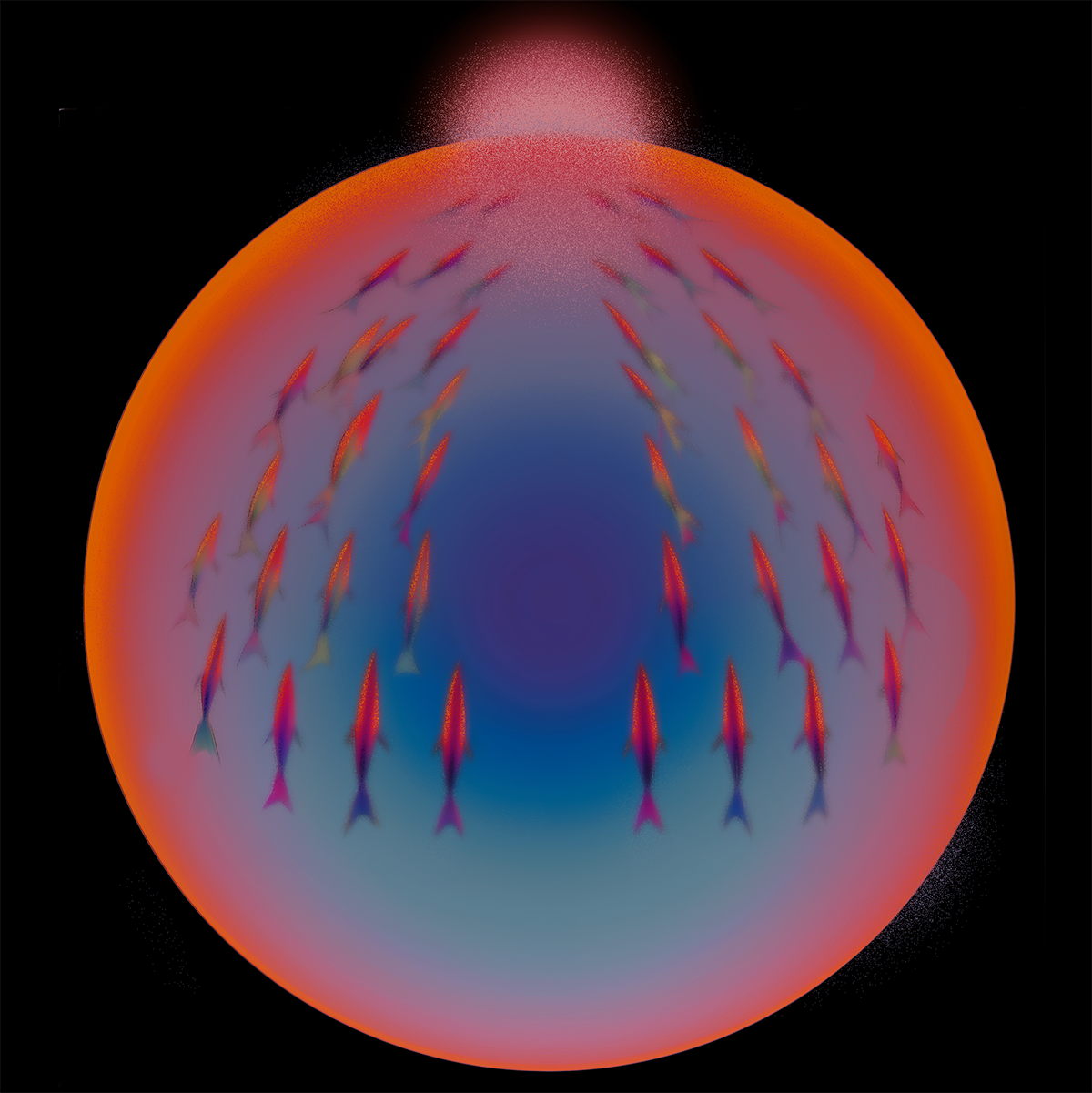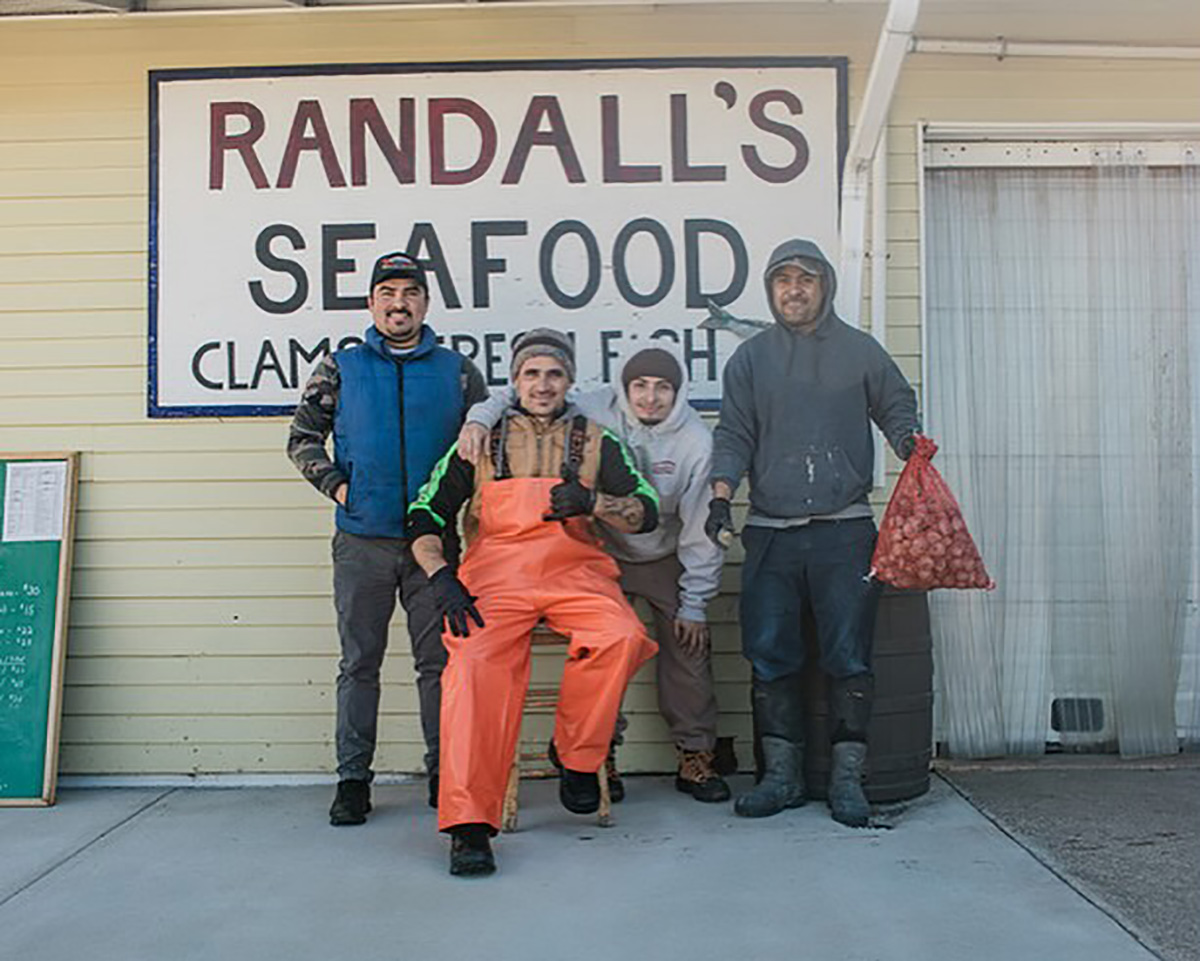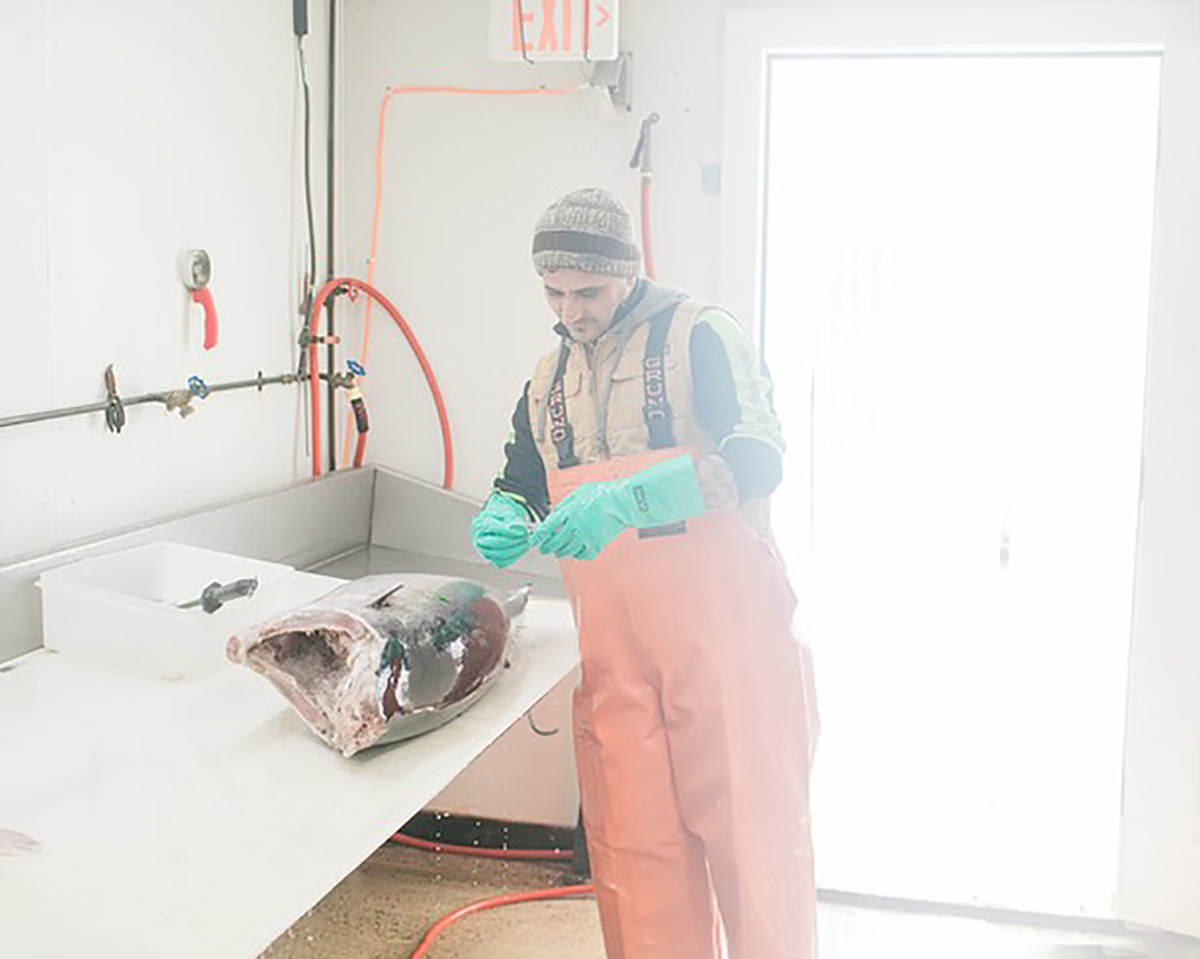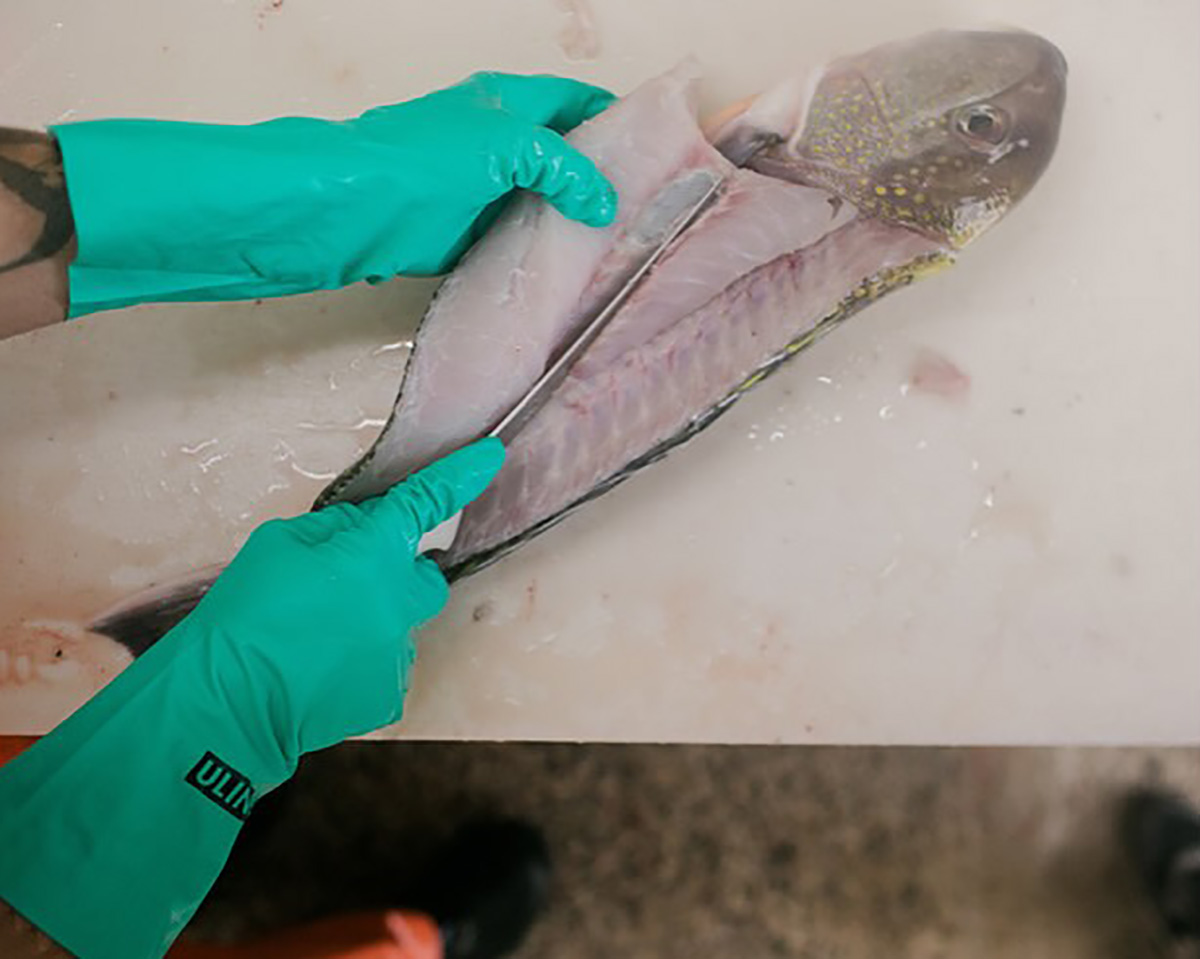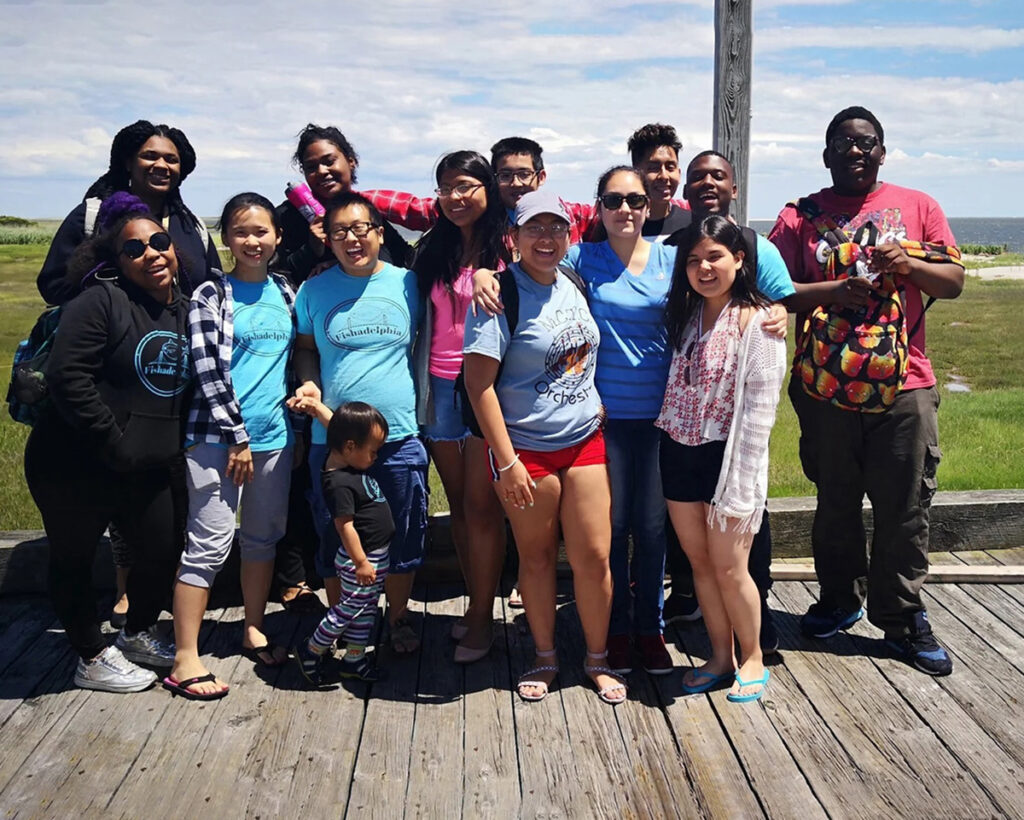relational architectures is a series that locates ways for design to operate through relationships built on solidarity.
Dogfish, skate, and porgy are not considered to be a valued product for a scalable, competitive American seafood product. Not because they can’t be eaten or because they don’t make for a flavorful and nutritious meal. But because they are not reaped by 40 mile long drift nets at the expense of innumerable other species. They are not farmed in immense fjordian spawning pools, incubating disease and lice. They aren’t typically packed and processed by underpaid and forced labor. They don’t spark violent maritime skirmishes, factory laborers are rarely maimed or killed pursuing them. They are also not available fresh, every day of every week throughout the year, without fail.
But depending on the season, whether a nor’easter moves in off the New England coast, or just what the fishers happen to pull up from the sea that week—they are among the fish that are sold and enjoyed to the members of Fishadelphia, a community-supported fishery (CSF) that caters to communities around Philadelphia. Since 2018, the CSF has managed to provide fresh catch to people living in the city, to pay its workers fair and living wages, offered educational and social spaces for members of its community, and given people food that relies neither on the exploitation of workers nor the ecocide of fish stocks. Part of a growing network of CSF programs in the US, the community focused model demystifies fishery work, provides nutritional, local catch for members, and brings seafood eaters closer to the fish and fisherfolk that are the foundation of these food systems.
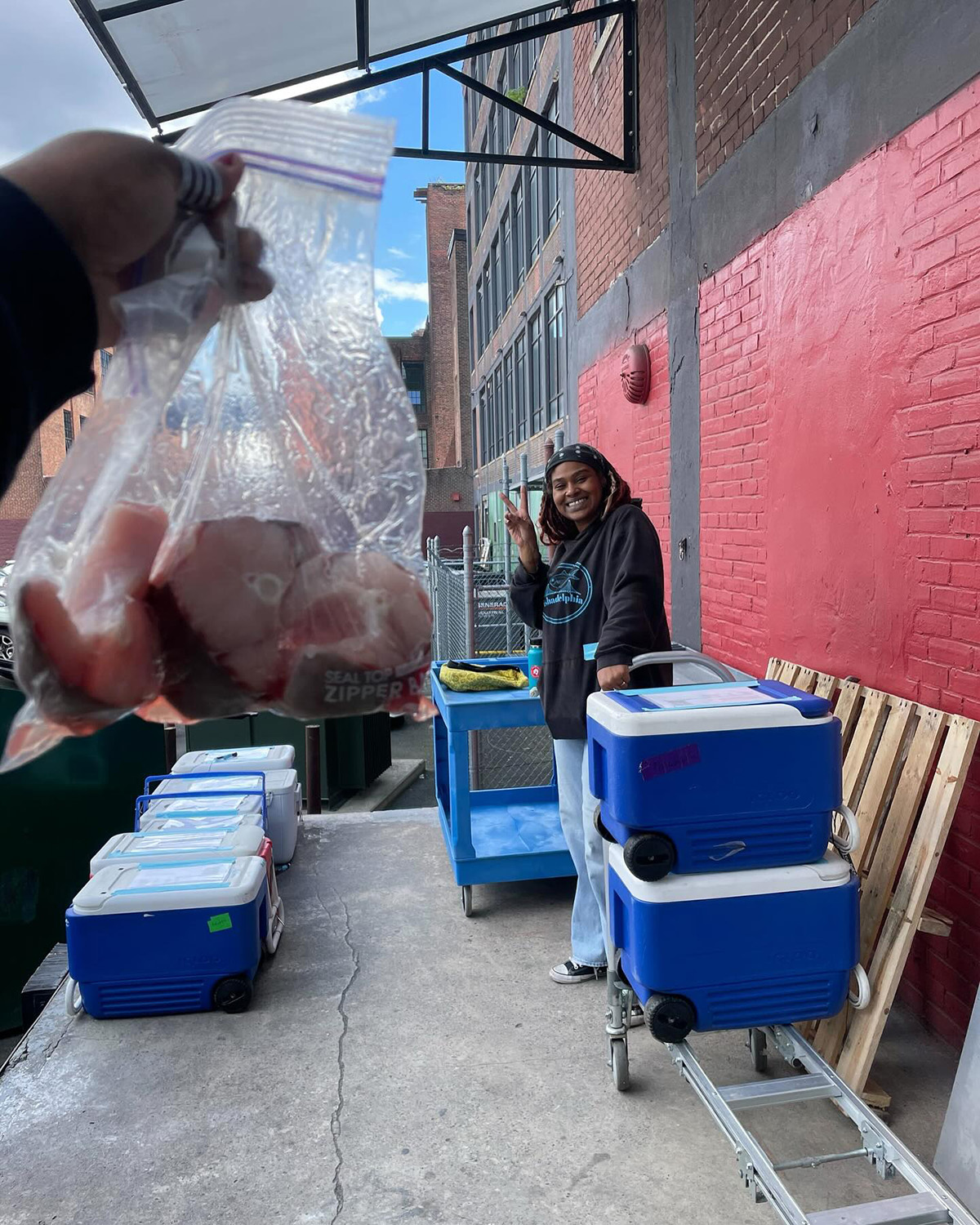
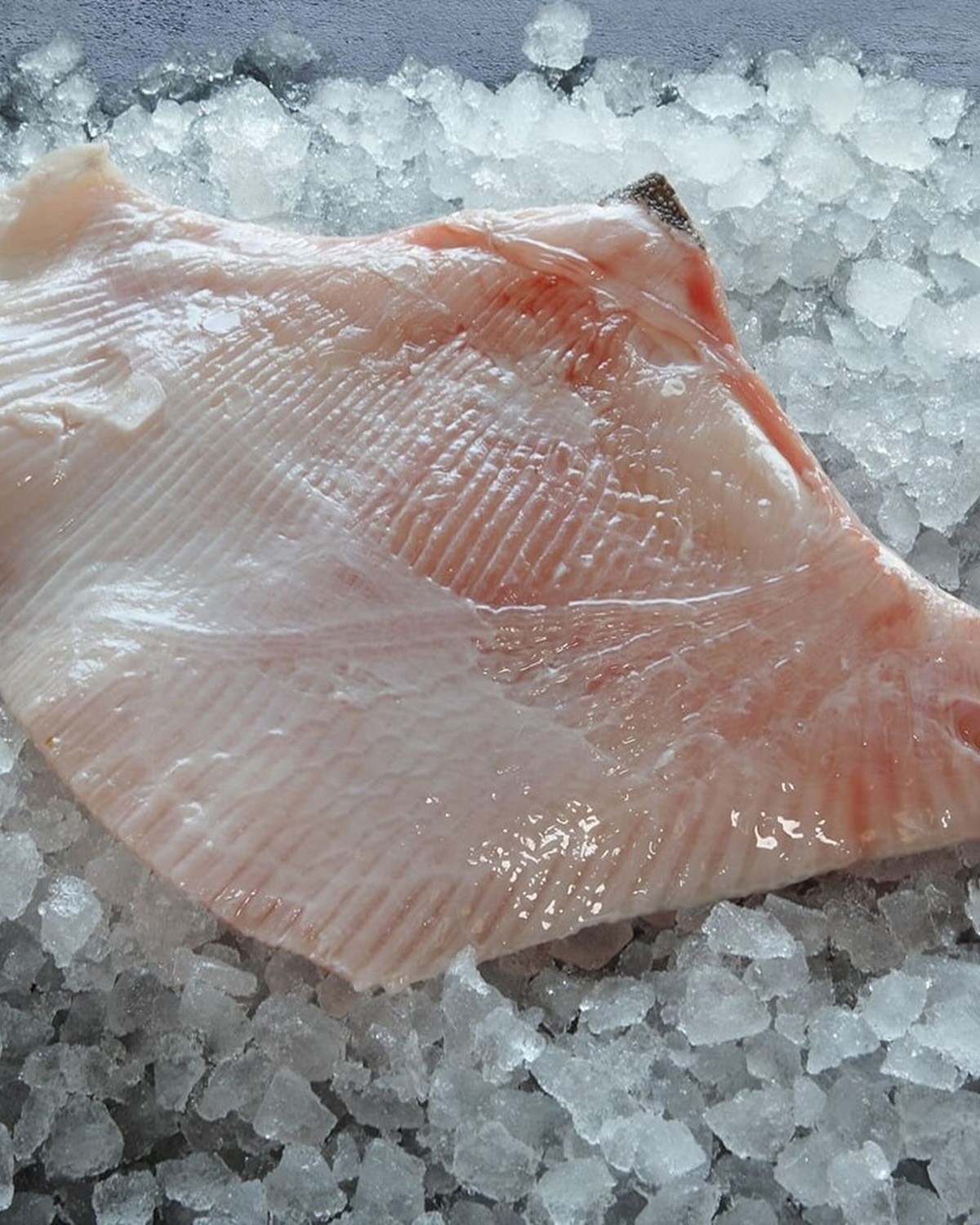
Dogfish are disregarded often, and even considered a nuisance because of their predation of more valued fish species, but they are often used in fish and chips in the UK—and are widely popular in Australia. Porgy, in recent years maligned as a “trash fish,” has long been an important fish in Black fisherfolk communities on the east coast. Skate too, which sometimes is regarded as bycatch to many New England fishers has gained little attention from commercial operations in the US in no small part because of their slow reproduction cycles. They are not bountiful in the same way as say, cod–a fish that lays up to 9 million eggs at once–has been historically.
Of course, even the Atlantic cod fishery infamously collapsed. Skate and dogfish certainly shouldn’t be scaled for the sort of production that the global fish market demands but really no fish should be. Fishadelphia offers a different approach to mediating the ecology of the Atlantic and the needs of its members. While they occasionally serve some popular species such as sea bass and tuna too, the catch varies every week depending on what’s available and what the fishers bring in. “There are artificial structures in place and we have come to expect that we can have low-cost year-round access to like a few species—[we should understand that] salmon’s not local to New Jersey and it’s not available all year round seasonally.” says feini yin, a spokesperson for Fishadelphia. Like the community-supported agriculture (CSA) model then, the CSF too is determined upon the forces of the sea and season rather than the winds and currents of capital and market share.
With ecological decline—ocean acidification on fish populations, and warming oceans, managing to create “sustainable” fisheries is a hazy prospect but Fishadelphia’s policy adheres to only selling fin fish that are federally managed. The fishing operations they buy from are not subsistence or artisanal fishers, they are small to medium sized operations that use mechanized equipment but that take day trips, as opposed to the months long tours of factory fisheries.
This relationship between having a balanced, or more sustainable catch, and the labor demands of the Fishadelphia CSF go hand-in-hand. The relational model of community-supported fishery, like community-supported agriculture, is not necessarily in direct competition with other sellers, but instead is driven by food that is available and by collective support of the people who catch the fish, move the fish, pack the fish, organize the fish, and eat the fish. When feini yin joined the Fishadelphia, they entered as a customer. “Then I became a staff member, team member–and wore many different hats as a team member. I helped run the youth program. I packed fish. I drove fish around the city in a truck. I helped filet and process the fish and also helped with general operations.” says yin. The organization itself has no physical infrastructure, it works with local high schools for pick up points, and through the pandemic, shifted towards the use of coolers from members who volunteered their front porch as pick up locations.
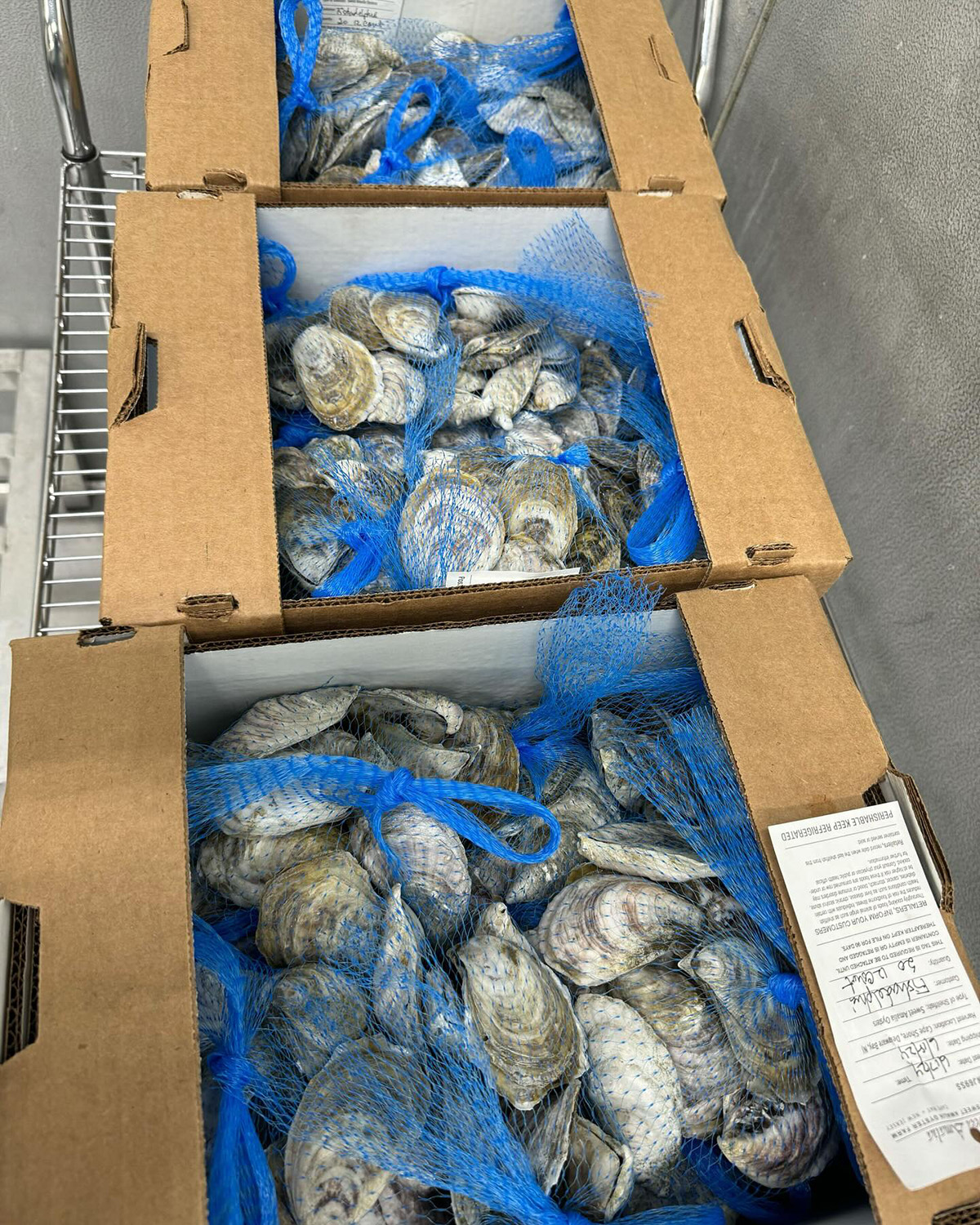
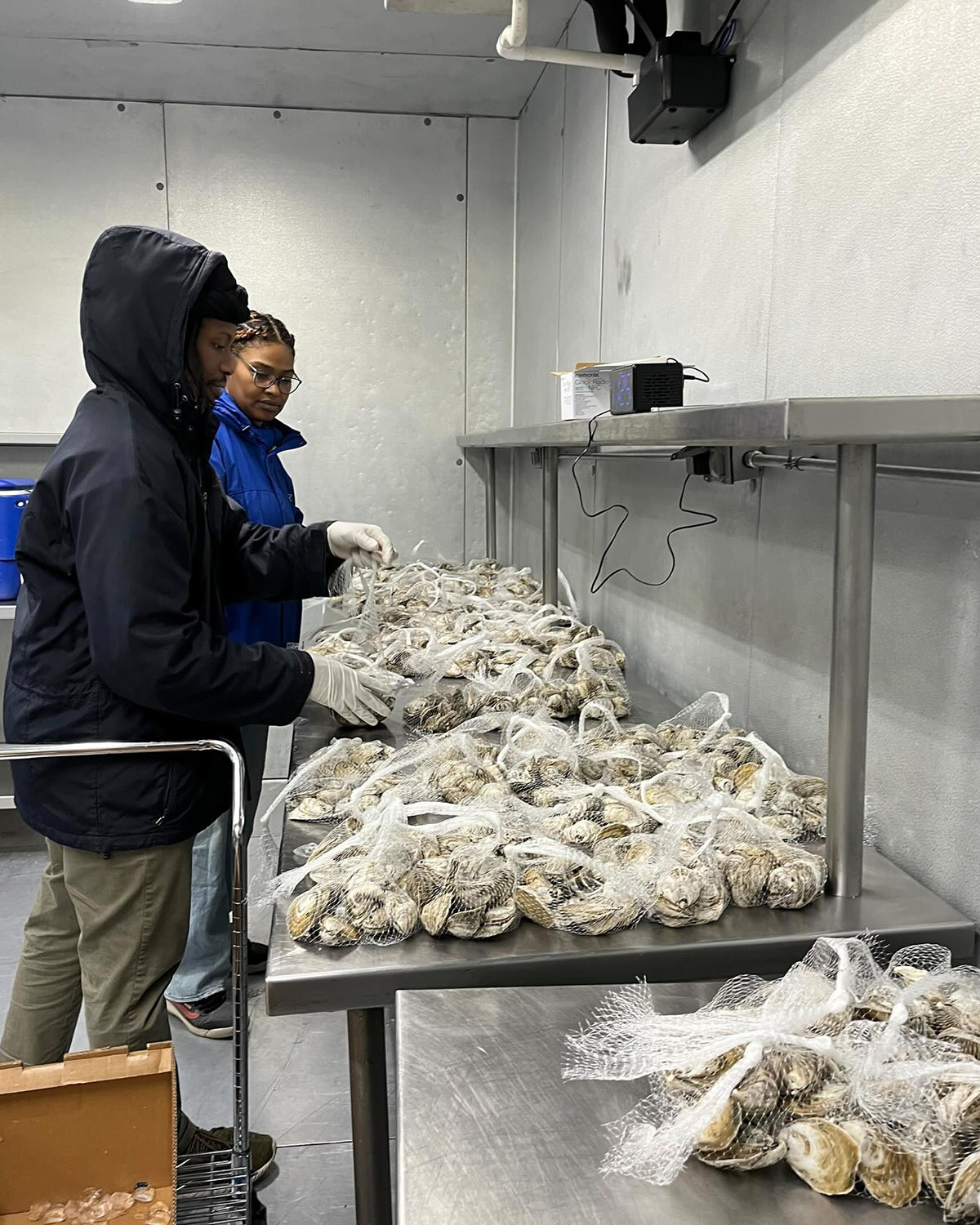
This sort of blending or unification of labor operations, shared or at least made visible, is integral to making Fishadelphia “community supported.” Since the 18th century, colonial and industrial fisheries in the Americas have been built upon division of labor—with Adam Smith himself noting the unregulated free market in the New England fisheries of the American colonies as a promising blueprint for the modern capitalist factory. Today the competitive ability for the fishers themselves to survive off their catch is more difficult than ever—and receive even less support from the government than small-holdings farmers do. So the fisherfolk they buy from are small, independent vessels that still rely on other sales to keep them afloat but the CSF offers a valued support by guaranteeing a certain portion of the catch, and often some species unrecognized by the bigger buyers, can be sold.
How the fish is processed also plays a key factor in what makes the model of the Fishadelphia CSF distinct from the wider market fisheries. Sometimes the local catch does not mean the labor going into it is all local. “There could be fish that is being caught in New Jersey, you know, in our local waters that goes around the whole world and then comes back,” says yin, “And it seems kind of backwards and counterintuitive, but actually with these globalized systems, they’re able to make the seafood costless because of the economies of scale and the low labor costs.”
Over six years—through a pandemic, with inflation and rising costs—the CSF has been competing with these forces. Because it pays a fair wage to their workers and market prices for their fish, because they run a special program for the young in the community, because it wants to serve the needs of the many rather than the demands of a few—it has been forced by the prevailing fishing operations, especially those that disregard ecology or workers rights, into a position whereby it must struggle. Fishadelphia has grappled with these realities as time has gone, despite having 250 active members and 15 different pickup locations in Philadelphia. “That ends up becoming a challenge and a balancing act for us because one part of our mission is really paying folks living wages and having folks run the business that wouldn’t otherwise be necessarily doing food systems work at all. And we want people to like having agency in the food system and to be able to have that connection and agency in their own food.” says yin.
Currently, Fishadelphia offers a limited number of free seafood members, but the standard market rate is $24 per lbs—quite expensive for a pound of fish in comparison to store-bought fish, and the highest membership tier is double that “They’re subsidizing a neighbor, basically.” says yin. As time has gone on, the demands of the market and its ever growing costs have had their impact on Fishadelphia. “The seafood club was formed initially to serve low income people of color in the city, the majority of our membership ends up being actually wealthier people, a lot of wealthy white foodies. It’s become a form of social justice or charitable giving.” says yin.
From the beginning, the emblem of Fishadelphia—the communities it represents, and the transparency of its fishing and labor practices for Fishadelphia has become the “whole fish.” Indeed, part of Fishadelphia’s origin story comes from founder Talia Young’s rejection of the notion that the American consumer will only eat cod and salmon filets. Chinese-American, Young came from a family where eating a variety of different species and buying them whole, rather than fileted, was commonplace. They realized, too, that many other often underrepresented communities in Philadelphia were comfortable or even preferred the whole fish.
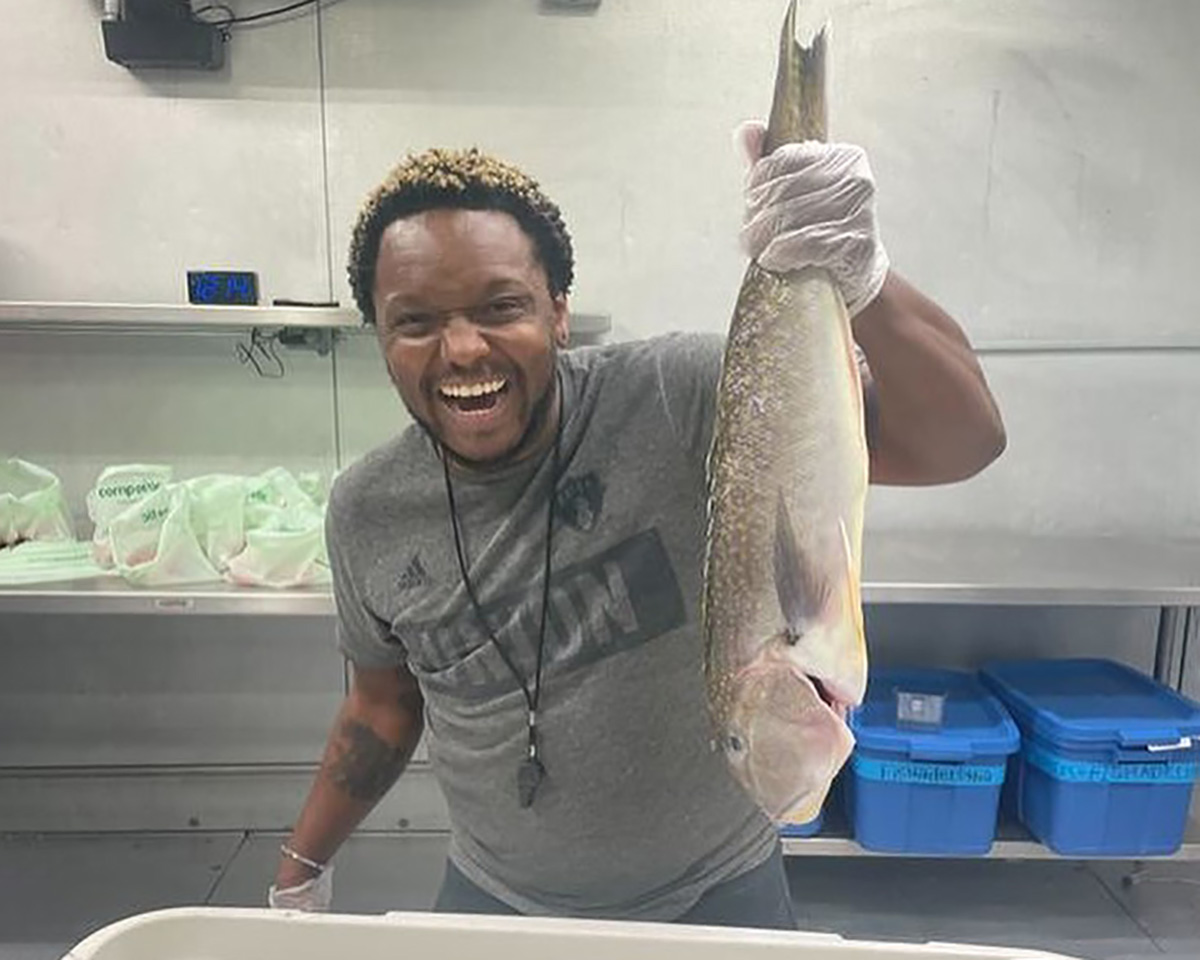
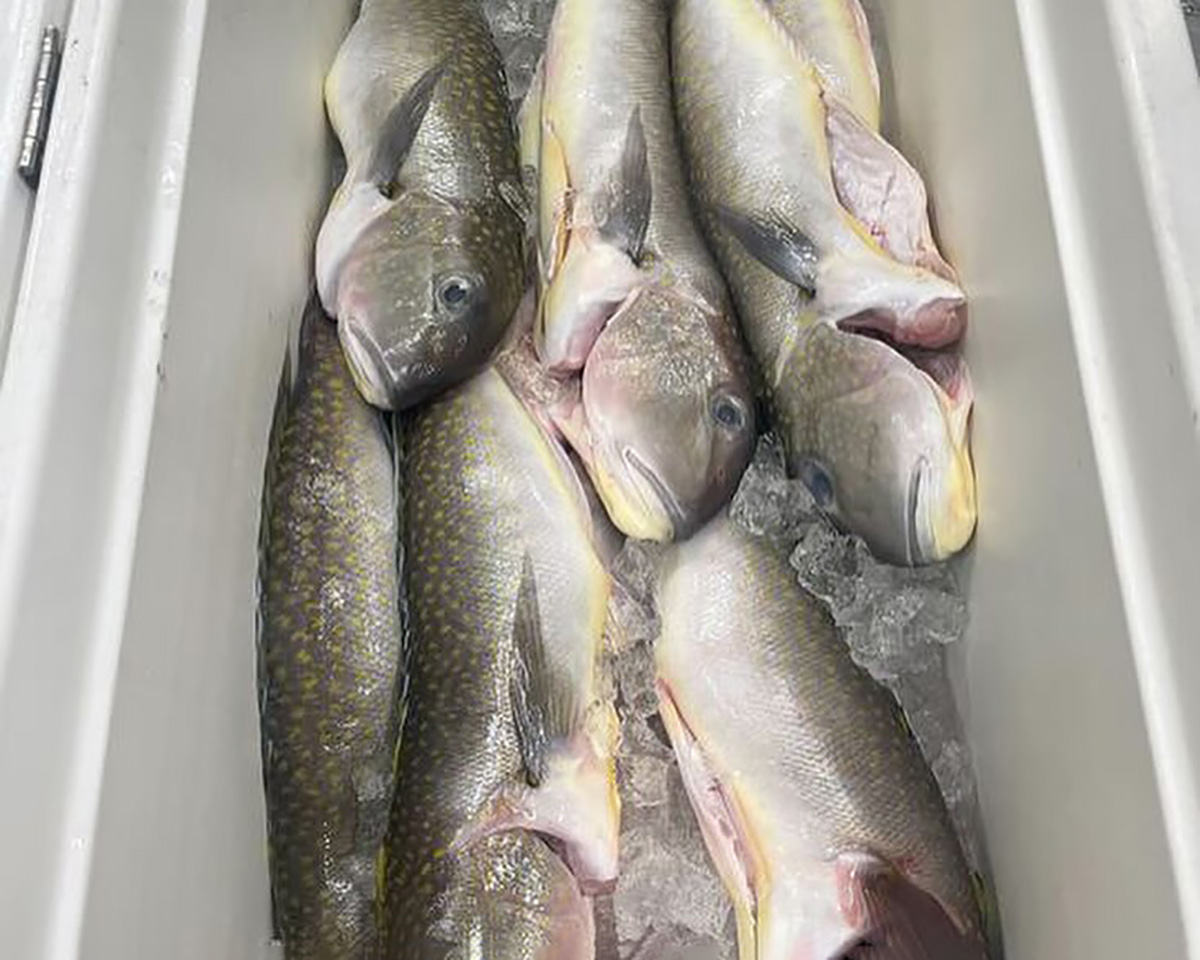
Preferences or expectations about the way fish should be caught, processed, served and eaten have all figured in dispelling manufactured myths about how Americans consume fish. Fishadelphia embodies that in nearly every aspect of the operation, “(Fishadelphia) is run by people in the city that are, for the most part, queer people of color.” says yin. Their workers and members, both young and old, are representative of people that are not only seeking community relationships but are also trying to better understand their relationship to nature and ecology, “In the dominant seafood system there’s a lot of alienation. It’s very convoluted, it’s globalized. Trying to create an entirely local seafood supply chain is, I think, a pretty radical thing.” says yin, “And then on top of that, it’s a group of queer people of color in the city trying to do it and learning a lot along the way because none of us come from fishmonger families.”
Fishadelphia, and CSFs like it are not only offering their members a whole, healthy fish, but a different way to live and eat in relation to the sea. The conventional fileted commodity represents an unchartable division of labor and an unaccounted plunder of fish stocks. The promise of a CSF is overlooked species or seasonal catches that independent fishers can offer and sell without taking on losses, risky pursuits, or ecological compromises. It serves people, across generations, that are not interested in the false American ideal of seafood, but in having a fulfilling community and culture around the food they eat and a direct connection to the sea from the city.
From the sea, to the fishing boat, to the drivers, to the collection cooler, to the meal, the fish is passed between hands not for the profit of one but for the livelihood of everyone involved. It’s local and fresh and comes from fisherpeople whose names are not obscured or hidden but are engaged in the organization through labor and/or solidarity. The “product” is whole (literally) and fulfilling not for the fish filet but for the poor, the middle class, the rich necessarily too. Its only sacrifice is an idea of convenience—and not the sacrifice of choice but simply the acceptance of different determining factors. Namely, not the whims of a brutalizing commercial industry, but the availability and well-being of regional fish stocks, the climate and winds of the sea, and the work of local fisher people. “It’s about fish,” says yin. “but it’s also about a lot more than fish.”
